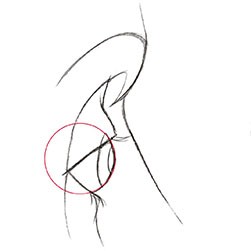
In profile, the iris is part of the curve of the full circle of the eyeball.
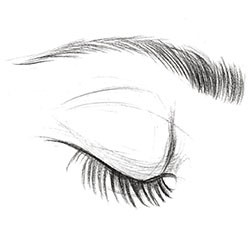
The circular curves of the eyeball and eye socket are still present when the eye is closed.
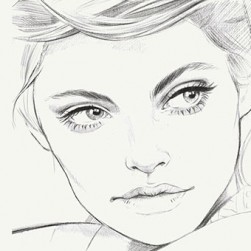
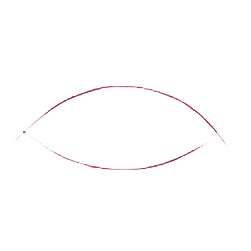
Here is a super easy way to draw the eye from a frontal view. The upper and lower curves are almost mirror images in a pinched oval shape.
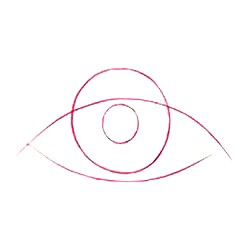
The line of the lid acknowledges the shape of the eyeball. The top eyelid is almost parallel to the existing top line and almost touches the top of the iris. The lower lid is almost parallel to the existing line but becomes narrower at each end.
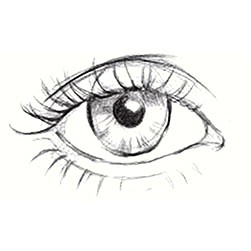
I suggest studying the curves of the eyelashes since they change slightly from one end of the eyelid to the other.
Note: The white of the eye, the sclera, is never fully white and will require shading due to the shadow cast by the eyelashes.
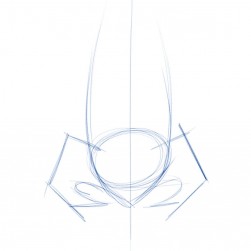
A horizontal oval masks the three-dimensional tip of the nose. Add a vertical line that splits the oval in half to guide the left-right symmetry of the nose. The shape of the outer nostril (called the ala) is a little like a lobster claw. A horizontal line drawn across the bottom of the nose tip connects the nostril to the ala.
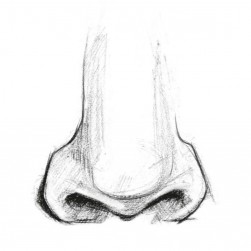
Shadows and highlights create the contours and give the nose its threedimensional form. Notice how the dark shading in the nostrils becomes less defined toward the bottom. Work with your eraser to softly remove overly dark areas here.
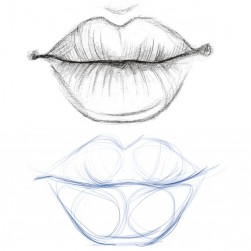
The contours of the lips can be drawn as soft curved strokes. The length of the curved strokes changes as you move from the corners of the mouth to the center.
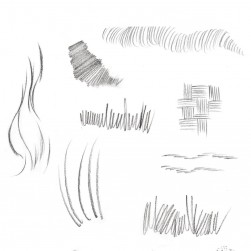
As a warm-up, try drawing straight lines from the top of the page down. Draw diagonal and horizontal lines, turning the paper, so that you’re still dragging the pencil vertically from top to bottom. In creating curved lines, I keep my hand in one position and draw an arc from right to left, again moving the paper so that I can continue the motion.
You can easily represent the different textures and materials of a person’s hair, clothing, or environment using different marks and strokes. Practice making different weights of line by changing the angle of your pencil, bearing down heavily, or barely skimming the surface of the page.